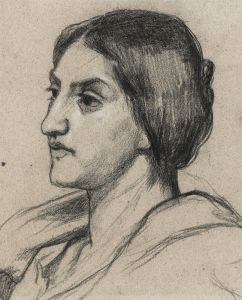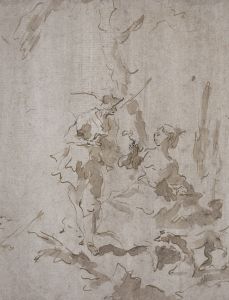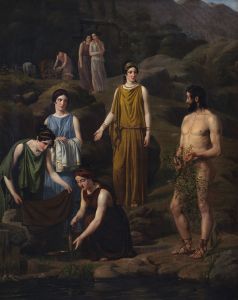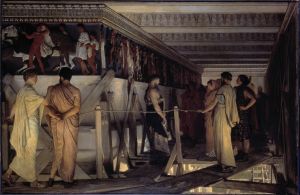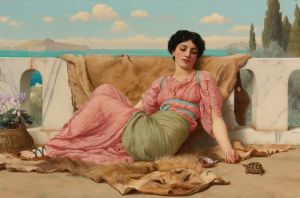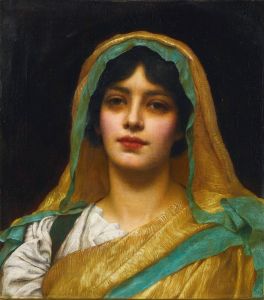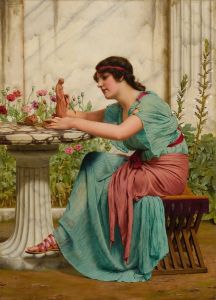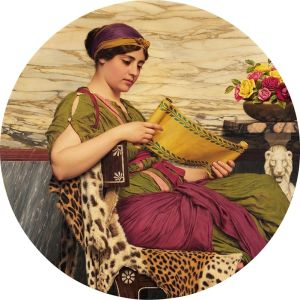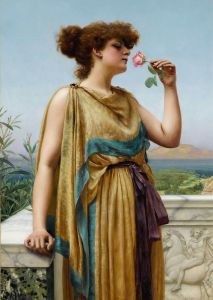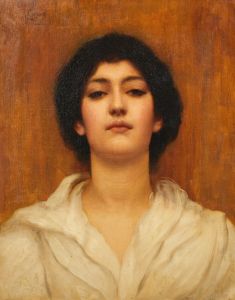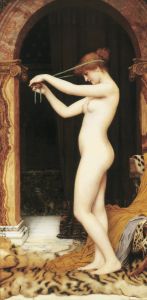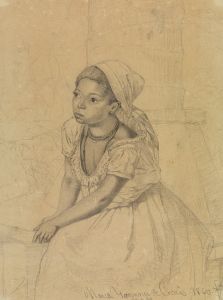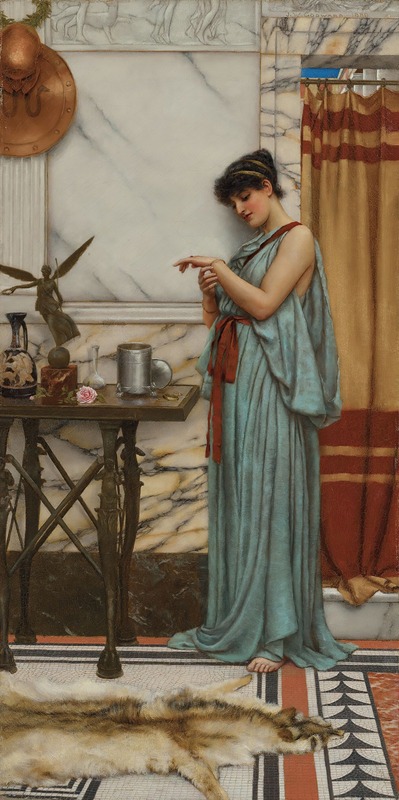
His birthday gift
A hand-painted replica of John William Godward’s masterpiece His birthday gift, meticulously crafted by professional artists to capture the true essence of the original. Each piece is created with museum-quality canvas and rare mineral pigments, carefully painted by experienced artists with delicate brushstrokes and rich, layered colors to perfectly recreate the texture of the original artwork. Unlike machine-printed reproductions, this hand-painted version brings the painting to life, infused with the artist’s emotions and skill in every stroke. Whether for personal collection or home decoration, it instantly elevates the artistic atmosphere of any space.
John William Godward was a British painter associated with the Neo-Classicist movement. He was born on August 9, 1861, and became known for his depictions of women in classical settings, often drawing inspiration from ancient Roman and Greek themes. Godward's work is characterized by its attention to detail, vibrant colors, and the use of classical architecture and drapery.
"His Birthday Gift" is one of Godward's paintings, although specific details about this particular artwork are not extensively documented in historical records. Like many of Godward's works, it likely features a female figure, as this was a common subject in his oeuvre. Godward's paintings often depict women in serene poses, surrounded by elements that evoke the classical world, such as marble terraces, lush landscapes, and intricate textiles.
Godward's style is often compared to that of Sir Lawrence Alma-Tadema, another prominent Neo-Classicist painter. Both artists shared a fascination with the ancient world and often portrayed idealized visions of antiquity. Godward's attention to the textures of fabrics and the play of light on marble surfaces is particularly notable, showcasing his technical skill and dedication to realism.
Throughout his career, Godward faced the challenges of changing artistic tastes. The rise of modern art movements, such as Impressionism and Post-Impressionism, led to a decline in the popularity of classical themes. Despite this, Godward remained committed to his style, continuing to produce works that celebrated the beauty and tranquility of the classical past.
Godward's personal life was marked by a degree of mystery and seclusion. He was known to be a private individual, and little is known about his relationships or personal experiences. This sense of isolation is sometimes reflected in his paintings, which often depict solitary figures in contemplative settings.
Tragically, Godward's life ended in suicide in 1922. His death is often attributed to his despair over the declining interest in his artistic style and the lack of recognition he received during his lifetime. Despite this, Godward's work has experienced a resurgence in appreciation in the years following his death, with art collectors and historians recognizing the technical mastery and aesthetic appeal of his paintings.
Today, Godward's paintings, including "His Birthday Gift," are appreciated for their beauty and craftsmanship. They serve as a testament to the enduring allure of classical themes and the skill of an artist who remained true to his vision despite the changing tides of the art world. While specific information about "His Birthday Gift" may be limited, it remains a part of Godward's legacy, contributing to the broader understanding of his work and the Neo-Classicist movement.






